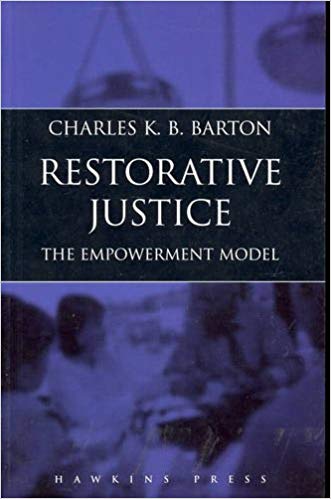Restorative Justice – The Empowerment Model presents a powerful challenge to many current accounts of the criminal justice system.
Charles Barton gives a clear and insightful analysis of current restorative justice philosophy and theory. He uses a unifying and overarching principle of empowerment to provide a distinct conceptual framework for restorative justice theory and practice.
He puts forward a step-by-step implementation process, which includes restorative meeting facilitation, complete with seating plans and scripted prompts for mediators, keepers, and facilitators. There will also be two sample role plays in the book and additionally there will be four complete role plays available on our website, closer to publication.
Barton emphasises the importance of each participant in a restorative justice meeting – the victims, offenders and their supporters as well as professionals such as police, social workers and legal advocates. Successful programs must consistently and reliably achieve maximally restorative outcomes for all of them.
Practitioners need always keep this objective in mind.. Barton’s book will strengthen their comprehension and facilitate application of the practical process.




